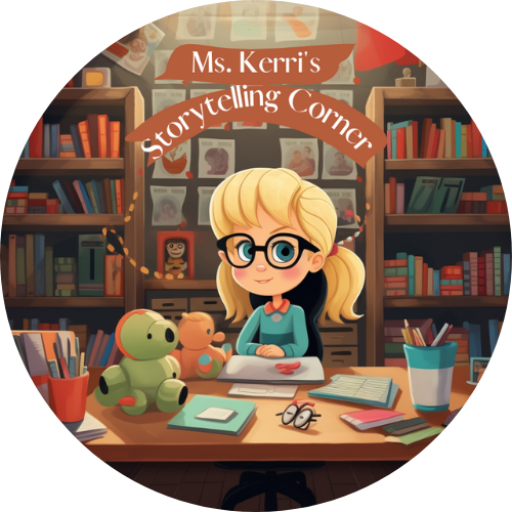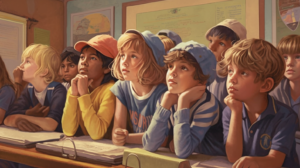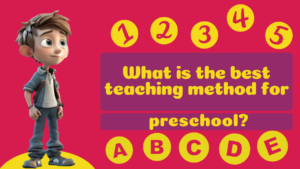Fun & Educational Interactive Read-Alouds for Kids
Reading is an essential activity that can help children develop language skills, enhance their imagination, and improve their cognitive abilities. However, traditional read-alouds can sometimes be dull and monotonous, leading to disinterest in children.
But what if there was a way to make read-alouds fun and interactive? Enter interactive read-alouds for kids! These engaging read-aloud activities not only capture children’s attention but also help them develop a love for reading and improve their comprehension skills.
Interactive read-alouds for kids involve the reader and the listener in an interactive storytelling experience. These read-aloud sessions integrate different activities and techniques that help build a connection between the child and the story. By engaging the child in listening, speaking, and imagining, interactive read-alouds create an environment that helps children retain information and comprehend the story better.
In this section, we will explore the joy and educational benefits of interactive read-alouds for kids. We will provide engaging activities and strategies that will make read-alouds fun and educational for children. So, get ready to discover the world of interactive read-alouds and learn how to make storytime an interactive and enjoyable experience for kids!
Interactive Read-Aloud Strategies and Techniques
Interactive read-alouds are a fantastic way to encourage children’s love of reading and learning. Here are some interactive read-aloud strategies and techniques that can help improve comprehension and engagement during reading sessions:
Use Open-Ended Questions
Asking open-ended questions during reading sessions can encourage children to think critically about the story and characters. This also helps build comprehension skills and encourages deeper understanding of the text. Use questions like “What do you think will happen next?” or “Why do you think the character did that?” to spark conversation and get children thinking.
Involve Children in the Storytelling Process
Encourage children to actively participate in the story by allowing them to make predictions, ask questions, or even suggest alternate endings. This can be done by pausing during the reading and asking for their thoughts or opinions, or by prompting them to fill in the end of a sentence or phrase. This technique not only makes reading fun but also helps children feel more invested in the story and characters.
Utilize Props and Visual Aids
Adding props or visual aids, such as puppets or illustrations, can help bring the story to life and engage children even further. Use props to help illustrate a point or to create a more immersive experience. For example, if the story involves animals, bring along stuffed animals to represent each character.
Incorporate Movement and Sound Effects
Movement and sound effects can also help make the reading experience more interactive and enjoyable. Encourage children to act out parts of the story or make sound effects to go along with what is happening in the text. This technique can help children stay engaged and invested in the story.
Use Interactive Read-Aloud Resources
There are numerous resources available that can help enhance interactive read-alouds. Websites like Scholastic and Reading Rockets offer lesson plans, read-aloud guides, and activities that can be used to supplement interactive read-aloud sessions. These resources can help ensure that read-aloud sessions are both fun and educational for children.
Interactive Read-Aloud Books and Lesson Plans
Interactive read-alouds are a great way to cultivate a love of reading and enhance children’s learning experiences. Incorporating interactive read-aloud books and lesson plans can help create a memorable and engaging experience for children. Here are some recommendations for books and lesson plans that can be used during interactive read-alouds:
The Book With No Pictures by B.J. Novak
This interactive read-aloud book is perfect for young children who love silly stories. As the title suggests, this book has no pictures, but the text itself is full of fun sounds and silly words that will have kids giggling and begging for more. Use this book to inspire creativity and imagination and to introduce children to the idea that books can be fun even without pictures.
Chicka Chicka Boom Boom by Bill Martin Jr. and John Archambault
This classic book is a great choice for interactive read-alouds with young children. The rhyming text and colorful illustrations will capture children’s attention, and the rhythm of the story will get them moving and engaged. Use this book to help children develop literacy skills, including letter recognition and phonological awareness, and to inspire a love of reading.
The Day the Crayons Quit by Drew Daywalt and Oliver Jeffers
This award-winning book is a great choice for interactive read-alouds with slightly older children. The story is told through a series of letters from crayons who are tired of their job and want to quit. The book is full of humor and clever wordplay that will keep children engaged and entertained. Use this book to teach children about creativity, problem-solving, and the importance of individuality.
Lesson plan: Storytelling with Props
This interactive read-aloud lesson plan is designed for preschool and kindergarten-age children. The goal of the lesson is to help children develop listening and storytelling skills while also introducing them to the concept of cause and effect. The lesson plan involves using props to tell a story and engaging children in a discussion about the story’s plot and characters.
Lesson plan: Reader’s Theater
This interactive read-aloud lesson plan is designed for elementary-age children. The goal of the lesson is to help children develop reading, writing, and public speaking skills while also encouraging teamwork and collaboration. The lesson plan involves dividing students into groups and assigning roles for a reader’s theater production of a selected book. Students will work together to create costumes, props, and scenery and will practice reading their lines with expression and fluency.
By incorporating interactive read-aloud books and lesson plans into your classroom or home, you can help children develop a love of reading and enhance their learning experiences. Whether you choose silly stories, classic tales, or creative lesson plans, the key is to make reading engaging, interactive, and fun.

Ms. Kerri’s Corner provides a exciting virtual space for preschool learning. Through a variety of engaging activities, she exposes young minds to early math, literacy, science and social-emotional skills in a developmentally appropriate way. Centers for blocks, art, books and music allow children to explore hands-on learning at their own pace. Guided lessons subtly introduce number sense, letter sounds and narrative thinking. Careful observation gives insight into each child’s progress across domains. Viewers are also invited to participate, reinforcing that their ideas are valued. By making learning fun yet purposeful, Ms. Kerri lays the groundwork for future academic success while fostering creativity and imagination. Her program offers preschoolers valuable screen-based learning experiences.




